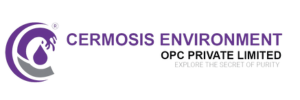\”A world where our rivers and reservoirs are overflowing with pharmaceuticals and chemicals; A world where our soil contains antibiotic-resistant bacteria; A world where our drinking water has traces of chemotherapy drugs.\” It\’s scarier to even imagine, yet it’s a brewing reality in our near future if we haven\’t implemented a proper wastewater treatment and management plan. Biomedical Waste Biomedical Waste Water In recent years, the environmental impact of Hospital Waste Water (HWW) has become a critical issue worldwide, with particular concerns in developing countries like India. This biomedical waste water, composed with a complex mixture of pharmaceuticals, pathogens, and other contaminants, poses significant risks to both human health and ecosystems when improperly managed. This article discuss about the major environmental implication of HWW and how we rectify this using simple technological upgradations. At Cermosis Environment (OPC) Private Limited, we recognize the urgent need to address this challenge and have dedicated ourselves to providing cutting-edge solutions for biomedical wastewater treatment. Hidden danger – Hospital wastewater Hospitals are major consumers of water, with daily usage ranging from 200 to 1200 liters per bed. In India, the Bureau of Indian Standards recommends 340-450 liters per bed per day, depending on the hospital\’s size. This high water consumption translates to significant wastewater generation: High-income countries: Average of 466 m³/day Upper-middle-income countries: Average of 297 m³/day Lower-middle-income countries: Average of 95 m³/day India, falling in the lower-middle-income category, faces particular challenges due to its large population and rapidly expanding healthcare sector. Composition of Hospital Wastewater: HWW is characterized by: High concentrations of biochemical oxygen demand (BOD), chemical oxygen demand (COD), and total organic carbon (TOC) Elevated levels of ammonia nitrogen, nitrates, and phosphorus Presence of pathogens, including antibiotic-resistant bacteria Emerging contaminants (ECs) such as pharmaceuticals, contrast media, and disinfectants Importantly, the average biodegradability index (BOD/COD ratio) of HWW is generally lower than municipal wastewater, making it more challenging to treat using conventional biological systems. Environmental Impacts of Untreated HWW: When released untreated, hospital wastewater can cause severe environmental damage: Aquatic ecosystem disruption: Endocrine-disrupting compounds have been linked to reproductive abnormalities in fish, with up to 80% of male fish in heavily polluted areas showing intersex conditions. Antibiotic resistance: Hospital effluents can contain antibiotic-resistant bacteria concentrations up to 100 times higher than in domestic wastewater. The WHO estimates that antibiotic resistance could lead to 10 million deaths annually by 2050 if not addressed. Soil contamination: Use of biosolids from wastewater treatment plants as fertilizer can introduce pharmaceutical residues into agricultural soils. Drinking water concerns: Conventional water treatment methods are not fully effective in removing all pharmaceutical compounds. A study of drinking water in 25 major U.S. cities found traces of pharmaceuticals in 24 of them. The Human Cost The impact of biomedical wastewater extends beyond the environment, directly affecting human health. Communities living near inadequately treated discharge points face increased risks of: Waterborne diseases Chronic health issues due to long-term exposure to pharmaceutical residues Decreased effectiveness of antibiotics when needed for treatment The Indian Scenario: India faces significant challenges in managing hospital wastewater: Lack of dedicated treatment: Many hospitals in India discharge effluents directly into freshwater streams without treatment or into municipal sewers for co-treatment with domestic wastewater. Regulatory gaps: While India has established the Bio-Medical Waste (Management and Handling) Rules, enforcement remains a challenge. The rules set limits for parameters like BOD, COD, and suspended solids, but do not specifically address many emerging contaminants. Treatment capacity: Many municipal wastewater treatment plants in India are not designed to handle the complex organic compounds found in hospital wastewater. Monitoring and data: There is a lack of comprehensive data on HWW generation and characteristics across different regions of India. Global Approaches and Best Practices: Different countries have adopted varying approaches to HWW management: On-site pre-treatment: Many high-income countries require hospitals to have on-site wastewater treatment facilities before discharge to municipal sewers. Stricter regulations: Some countries, like Spain and China, classify hospital wastewater as industrial discharge, requiring specific permissions and treatment standards. Advanced treatment technologies: Membrane bioreactors (MBR), moving bed biofilm reactors (MBBR), and advanced oxidation processes (AOPs) have shown promise in removing emerging contaminants. Integrated approaches: Combining biological treatment with adsorption, filtration, and oxidation processes can achieve higher removal efficiencies for recalcitrant pollutants. Cermosis Environment\’s Solutions At Cermosis Environment (OPC) Private Limited, we have leveraged our extensive experience in biomedical and hospital wastewater treatment to develop state-of-the-art solutions tailored to the unique challenges posed by HWW. Our flagship technology is based on Membrane Bioreactor (MBR) systems, which have shown remarkable efficacy in treating biomedical wastewater. MBR technology combines biological treatment with membrane filtration, offering several advantages over conventional treatment methods: High-Quality Effluent: Our MBR systems consistently produce high-quality treated water that meets and often exceeds regulatory standards. Compact Footprint: The technology requires less space compared to conventional treatment plants, making it ideal for hospitals with limited area. Effective Removal of Emerging Contaminants: MBR technology has demonstrated superior performance in removing PhACs and other micropollutants. Reduced Sludge Production: The process generates less excess sludge compared to conventional activated sludge systems. Comparative Performance: Raw vs. Treated Wastewater To illustrate the effectiveness of our technological competencies, the below table compares the characteristics of raw hospital wastewater with the treated effluent from one of our latest installed system in a Hospital: Parameter Raw HWW Treated Effluent Removal Efficiency BOD (mg/L) 400-800 < 10 > 98% COD (mg/L) 800-1200 < 50 > 95% TSS (mg/L) 300-600 < 5 > 99% TDS (mg/L) 2500-5500 < 2200 > 95% Total Phosphorus (mg/L) 8-15 < 1 > 90% Fecal Coliform (MPN/100mL) 10^6-10^8 < 100 > 99.99% PhACs (μg/L) Varies > 80% removal for most compounds > 80% These results demonstrate the remarkable efficiency of our MBR systems in treating hospital wastewater, consistently producing effluent that not only meets but often exceeds regulatory standards. Our Commitment: As a company deeply committed to environmental stewardship and public health, Cermosis Environment (OPC) Private Limited goes beyond merely providing technology. We see ourselves as partners in India\’s journey


